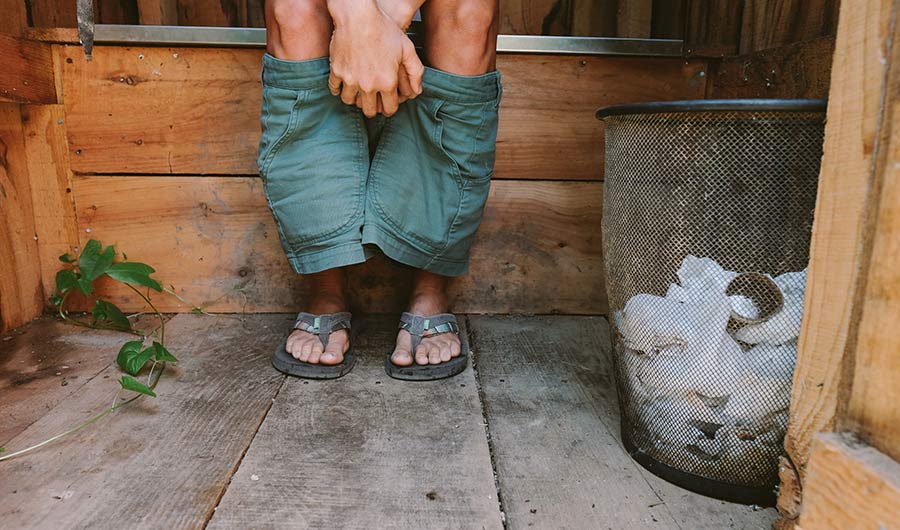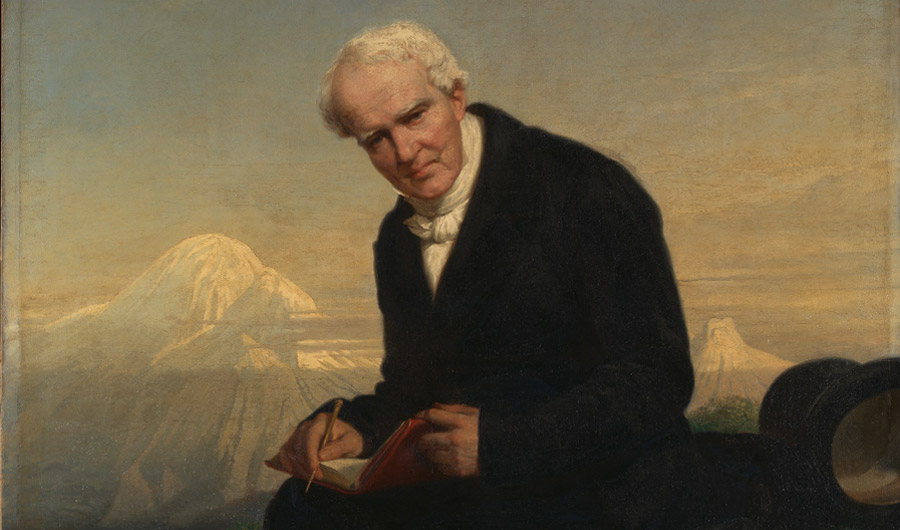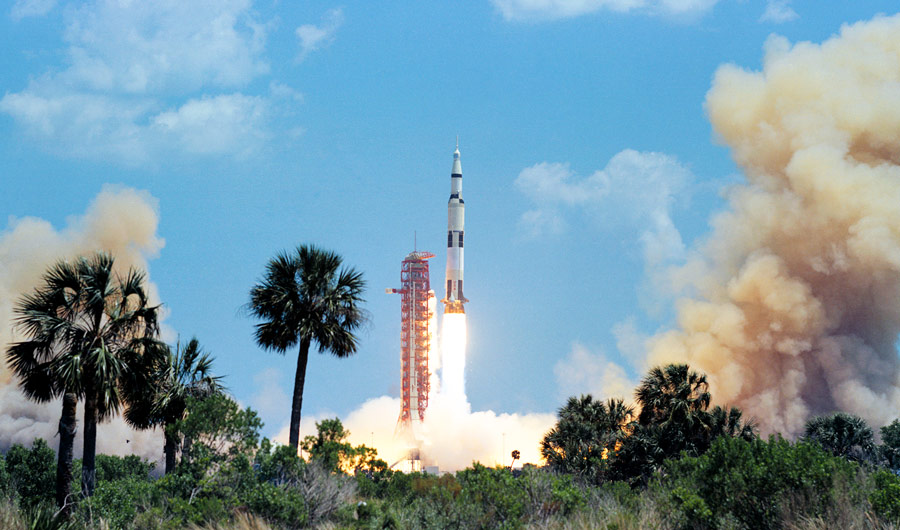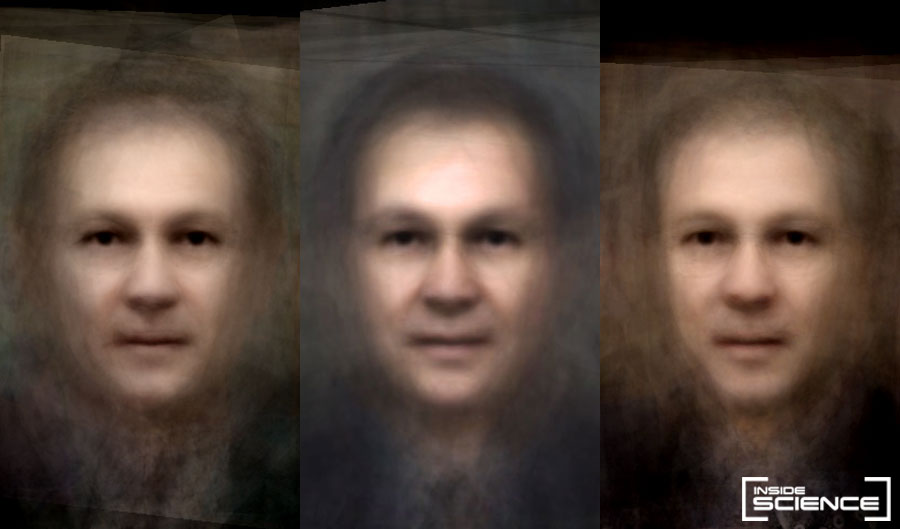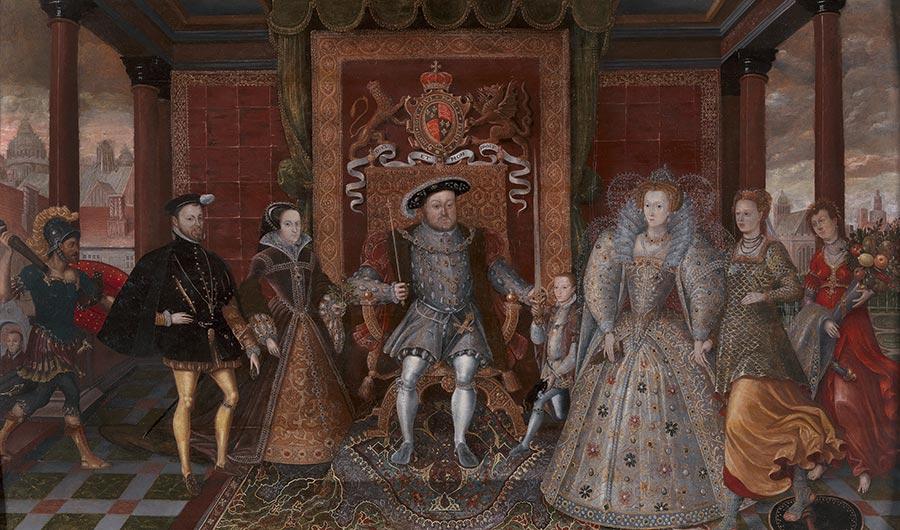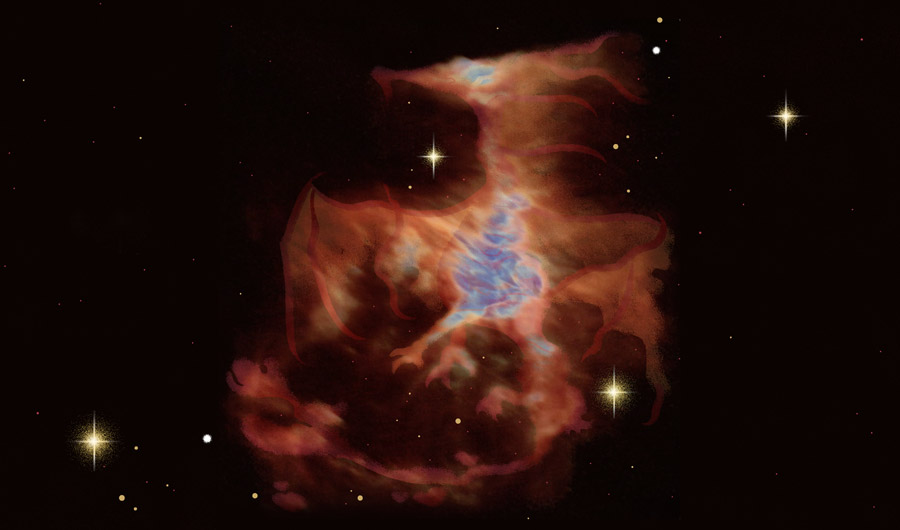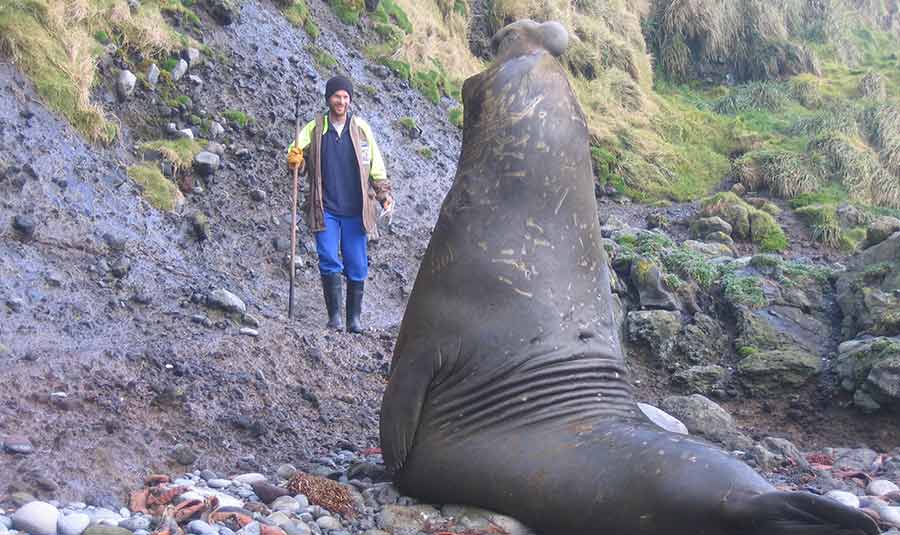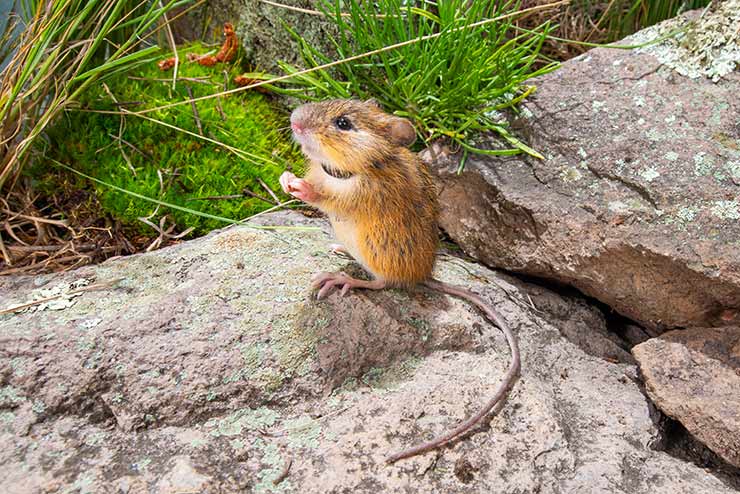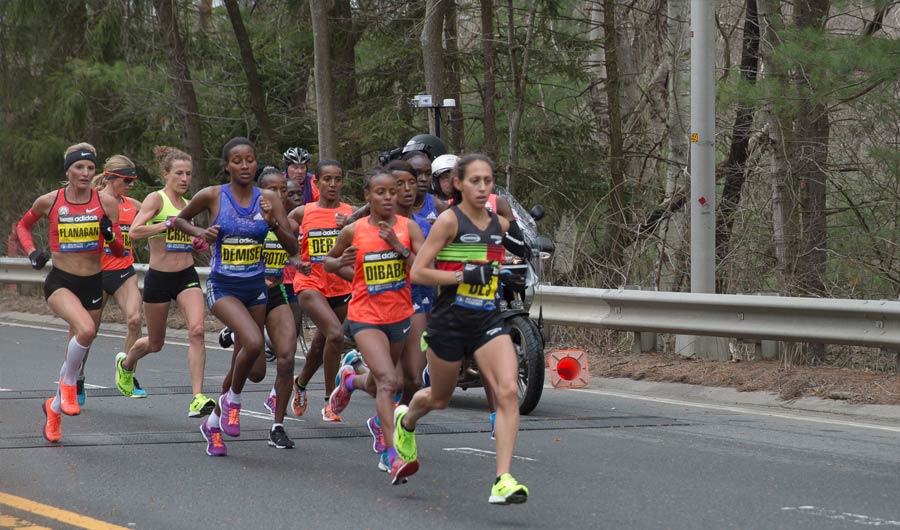Inside Science's The Best of 2019
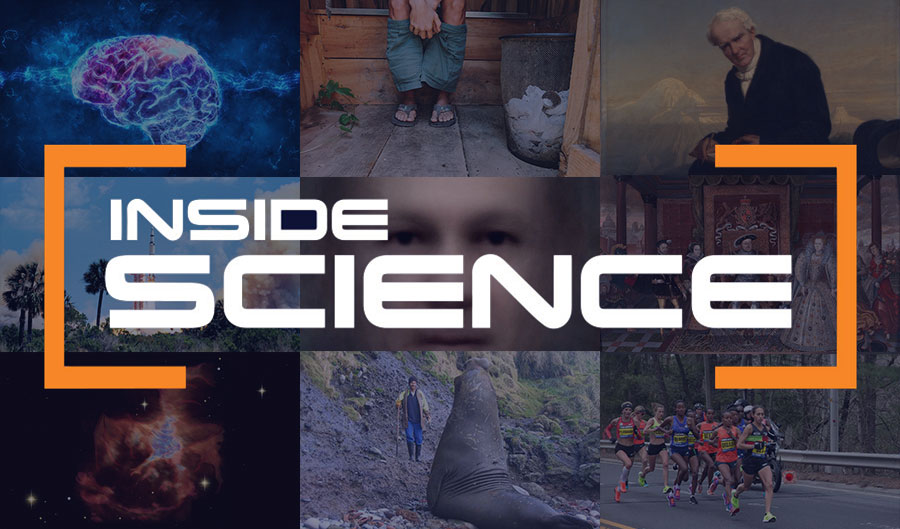
(Inside Science) -- This year marked the 50th anniversary of the first time humans set foot on the moon. Inside Science covered that anniversary, and many other stories throughout the year, bringing readers everything from newly revealed details about early mammals to Nobel Prize predictions and coverage. In this story, members of the Inside Science staff share two stories that they particularly enjoyed writing or reading. We hope you enjoy them, too. Happy New Year!
From: Chris Gorski, Editor
By Chris…
Scientists Find New Evidence of What Makes Chronic Traumatic Encephalopathy Unique
This story was based on a study of the brains of three people who had been diagnosed after their deaths with Chronic Traumatic Encephalopathy (abbreviated as CTE). The disease is most closely associated with the kind of repetitive brain trauma that can occur in sports such as football and boxing. I think scientific efforts to understand the risks of these sports and how to protect against those risks are important, so I wanted to cover it.
I had received advanced notice of the study a few days before it was published in the prestigious journal Nature. The authors described how they investigated CTE using a technique known as cryo-electron microscopy. They told me that the results showed that the very fine structures that they looked at -- the filaments made of a protein called tau that are folded into structures narrower than one-ten-millionth of a meter -- were clearly different in the brains of people with Alzheimer's disease than they were for people with CTE. But I wondered how important it was that the researchers had used their technique on what seemed like a small study sample. I didn't expect the other experts who I asked to comment on the research to say things like "it's pretty damn convincing" or "it's a heroic effort just to get to this point." But they did.
Writing and editing the story represented so much of what I really enjoy about science reporting. I've written about brain injuries and sports safety issues before, but this story was a much deeper dive into some very fine details about CTE. There was so much in the paper to learn about -- from the molecular details of several tau-related diseases to the idea that the researchers found a molecule encapsulated by the CTE tau proteins that they couldn't identify. Finding out what that molecule is could help researchers unlock even more about how this disease forms. As I come back to this story about nine months later that's what I'm thinking about. The researchers are surely thinking about it as well.
By someone else…
Inside the Controversial World of Composting Toilets, by Nala Rogers
One of my favorite stories we've ever done at Inside Science is Nala Rogers’ feature on composting toilets.
And not just because it's a detailed exploration of how people are trying to transform human waste into something useful, or at least something that requires fewer resources to handle.
First -- she opens the story with possibly the liveliest prose that ever appeared in the Journal of Economic Entomology: "[C]onsiderable consternation often resulted when a person lifted a privy lid and was greeted by a swarm of insects resembling wasps, or when upon leaving the privy he experienced a strange creeping and buzzing sensation due to flies being confined within his garments."
Second -- Nala obtained some all-time great quotes from her sources. Here's one, which The Atlantic's Sarah Zhang put in her tweet about the story:
"you should really make people understand how stupid it is to poop into clean water" https://t.co/tUcgWMOE3e
— Sarah Zhang (@sarahzhang) June 14, 2019
And I couldn't help myself either:
"If you put a sign up that says 'men must sit to pee' in a public toilet, people are going to pee on the sign." Another keen insight from @nala_rogers latest story for @insidescience https://t.co/OOxZHB5ltP
— Chris Gorski (@c_gorski) June 14, 2019
Third -- The story explained things I didn't think to wonder about. Composting toilets, it turns out, don't necessarily make the kind of compost that you might spread on your garden. But they do process the waste in a way that makes it less smelly and reduces the volume. It's also apparently quite important to separate the urine and feces. (Something that became apparent this past summer when I used some supposed composting toilets. It only takes a few words to sum up that experience: Ammonia is a powerful smell.)
From Catherine Meyers, Editor
By Catherine…
The Bold and Bewildering Curiosity of Alexander von Humboldt
If you’re like many Americans, the name Alexander von Humboldt may trigger only a fuzzy sense of recognition, if it registers at all. Although he was world-renowned at the time of his death in 1835, the Prussian explorer and naturalist -- most famous for his travels through South America -- has mostly faded from the general consciousness in the U.S. It’s a shame, because his story is a wild one.
I knew very little about Humboldt when I started researching an article in honor of his 250th birthday this year. As I learned more, a fascinating character emerged. One aspect of his personality stood out to me: his almost reckless curiosity.
Humboldt shocked himself with electric eels to see what happened. He crawled into dangerous tunnels in underground mines to test safety equipment he had designed. He risked altitude sickness, disease, and crocodile attack in his trek through the Americas.
One of the scholars I talked to called Humboldt’s curiosity and awe childlike. As the parent of a young human being who likes to jump on furniture, run through crowded spaces, and grab new objects with little regard for potential bodily harm, this characterization seemed spot on to me.
Humboldt’s curiosity may strike some as extreme, but I found it very endearing, perhaps because it is so human.
By someone else…
Apollonian Experiences, by Peter Gwynne
This summer, news outlets around the country recognized the 50th anniversary of America’s first crewed mission to the moon.
Inside Science ran several stories about the history and future of human spaceflight. My favorite was reporter Peter Gwynne’s personal recollections of his time covering the Apollo program for the Boston Herald Traveler and Newsweek.
Peter writes about the sights and sounds of a rocket launch, from the roar that shook the bleachers as the first manned Apollo mission ascended, to the way Apollo 17 -- the last crewed trip to the moon -- lit up a dark sky as it sped toward the heavens in the pre-dawn hours. He gives a glimpse of the tools of the trade for reporters at the time, including rotary phones and Western Union telegraphs, that now seem quaint. And he imparts a sense of the pressures and privilege of his journalistic duties.
I appreciated most the humility and gratitude with which Peter tells his story. The space program offered humanity a gripping tale of exploration and a sobering new perspective on our little planet floating in a vast, inky sea. Over time, the novelty of that perspective has worn off. Peter’s story reminded me of how meaningful it can feel to be a small part of something big.
From Yuen Yiu, Staff Writer
By Yuen…
The Face of the Average Science Nobel Prize Winner
I have seen these “average face” articles before, usually along the lines of “here’s what each nation’s average beauty pageant winner looks like.” I wanted to generate the average faces of Nobel Prize winners in the sciences -- even though I was pretty sure what those faces would look like. I also wanted to learn about the methodology used to generate these faces.
Originally, I thought that the faces could be generated by resizing and stacking transparent front-facing portraits and lining them up using facial features as reference points. I assumed with enough photos, the differences among the portraits would eventually even out. Boy, was I wrong.
Turns out you need to morph each face somewhat before lining them up. In short, you need to calculate the average position of every facial feature for all the portraits, before morphing and stacking them. For a large dataset -- more than 500 photos in my case -- it is practically impossible to be done by hand.
Luckily, there are a few free-to-use web tools that do the job. After trying out a few different ones, I found the one I used for the article. And as expected, the average face visually reflected the existing overrepresentation of middle-aged white males among past winners.
It was a lot of work for a pretty short story. But this is one case when the picture told the story.
By someone else…
Medical Historians Still Struggle to Identify Origin of Disease That Swept Across England 500 Years Ago, by Joel Shurkin
Imagine the terror of falling ill to a mysterious disease no one has a clue what to do about, without access to even the most basic knowledge of medicine, while living in a society that still believes in witchcraft and demons. Adding to that, the disease, countering the intuition of the day, attacks the young, healthy and rich, as opposed to the old, weak and poor. The sense of powerlessness must have been pure terror for the royals who never expected it.
Joel’s story touched upon one random but tragically common event that may have paved the way for the most important period of medieval England: the reign of Henry VIII.
My wife and I traveled to England earlier this year. Being of English and Scottish descent, she was naturally drawn to learning about the history of her ancestors. And so, like most London tourists, we visited the Tower of London and listened to beefeaters belting out colorful and slightly embellished tales of Henry VIII and his six wives. Riding on a high since we have been back from the trip, we still put on one of the dozens of medieval history channels on YouTube as we roll out the yoga mats and stretch before going to bed each night.
From Abigail Malate, Staff Illustrator
by Abigail…
Astronomers Spot a Pudgy Dragon in the Orion Nebula
I will be the first to admit that I experienced major struggles with this illustration. I remember when this story was first announced at the AAS 233rd Meeting this past January.
I remember when this story was first announced at the AAS 233rd meeting this past January. I was badly in need of caffeine, seated nervously in a modest conference room among the dozens of other reporters. Then, Joan T. Schmelz took the podium and began talking about “Orion’s Dragon.” She showed a short video of the Orion Nebula in 3D -- within it, the shape of a dragon made of star dust. I was struck with inspiration, an image seeming to form in my mind’s eye. I was so excited to draw this beautiful, voluminous, starry dragon and create the most glittering image.
Then reality set in. I am not the first artist to experience being excited for the potential of an image held in her imagination, and then having to face the disappointing reality of putting that imagination down on canvas. It took me weeks -- remember, the AAS meeting was in January. This article was published in February. That was because I went back and forth, being unsatisfied with the lines my hands were drawing when I compared them to the image I could imagine when watching the 3D render rotate slowly on my computer.
Despite my initial struggles, I am so proud of the result. The eventual compromise of showing my illustration at a 50% opacity, overlaid over the 3D rendering, is extremely satisfying to me. Apparently, I wasn’t the only one. Within a few weeks, I had gotten a request from one of the researchers about whether they could use my illustration as a gift for their fellow collaborator. Seeing as their research inspired me to create this image, I was completely happy to share it with them. This illustration had an impact I could not have predicted, and I am so humbled that the scientists of SOFIA were touched by it!
By someone else…
The Crazy Things Biologists Do to Track Animals, by Nala Rogers
I thoroughly enjoyed Nala Rogers’ story about the zany and sometimes dangerous lengths biologists go to to track animals for research. As a digital artist who spends most of her time staring at pixels in an office cubicle, I don’t spend much time thinking about biologists getting their hands dirty chasing their creatures of study. Nala’s story paints its own picture of the struggles that humans face studying animals all across the animal kingdom.
Rogers writes a story packed with interesting facts, funny circumstances, and impactful results. I loved the moment when she writes about the role eyelash glue played in a study following hummingbirds. In a test to determine which glue would best withstand flying birds, a colleague of the biologist covered her arm with fake eyelashes adhered with different glues. I found this image hilarious, and the specific disclaimer that the government did not endorse the adherent glue even funnier. The tongue-in-cheek takeaway interested me both as someone who regularly wears makeup, and as someone who has never had to fasten anything to a hummingbird. Tidbits like this kept me amused through the whole read.
I found the story impactful as well. It left me thinking about the truth to the mystery of the “white shark café” that sharks flock to. It left me wondering if regulations for tree thinning in the southwestern U.S. will change to preserve endangered jumping mice. It also, importantly, gave me an honest look at the human side of research. All these biologists are dedicated and passionate about their jobs, so much so that some of them would risk jumping out of a helicopter to forward their research. That’s hardcore!
From Nala Rogers, Staff Writer
By Nala…
The Crazy Things Biologists Do to Track Animals
I originally envisioned this story as a lighthearted piece about funny animals and awkward situations. Sticking scientific instruments to wildlife! How cute!
But when I talked to real wildlife telemetry researchers, their stories hit me like a punch. Animals suffer for the sake of data needed to save their species. Humans grapple with agonizing moral quandaries. Often, people put their lives on the line in efforts to minimize the risks to the animals they trap and tag.
I talked to someone whose knees were destroyed from years spent jumping out of helicopters and wresting deer and bighorn sheep to the ground. He did it that way to spare the animals from the risks of sedation and to minimize the amount of time they were subjected to stressful handling. I talked to another researcher who gave mouth-to-mouth resuscitation to venomous snakes when they stopped breathing on his operating table. A third source faced down an 8,000-pound bull elephant seal armed with nothing but a broom handle, refusing to let the male seal approach and perhaps crush the female that lay sedated behind him.
As I did my reporting, it soon became clear that the tone of the article had to change. Yes, there are funny stories, and I told several of them. But the true story was the inner tension of these scientists -- passionate animal lovers balancing trade-offs between the welfare of whole populations, and the individuals they hold in their hands.
By Someone else…
How Running a Marathon Changes Your Gut Microbes, by Rodrigo Pérez Ortega
One article I enjoyed this year was Rodrigo Pérez Ortega’s story about the effects of intense exercise on a person’s microbiome. With snappy, engaging prose, Ortega explained how researchers collected samples of “solid waste” from Boston Marathon athletes. After the race, the athletes’ guts had more of a type of bacteria that breaks down lactate, a byproduct released when muscles work. In follow-up research, the scientists found that the lactate-gobbling bacteria could help mice run longer.
It’s a topic everyone can connect with -- the hidden ways our microbial passengers are involved in our lives and health. The findings also raise hopes that we might manipulate lactate-eating bacteria and other gut denizens to our benefit. Here, Ortega walked a tightrope: exciting readers with the potential of future probiotic treatments, while framing the idea with appropriate cautions. He emphasized the limitations of the study and clarified that some of the authors might have a financial stake in developing probiotic supplements. Despite these caveats, the story maintained its momentum, leaving readers with a balanced, clear-eyed optimism.


